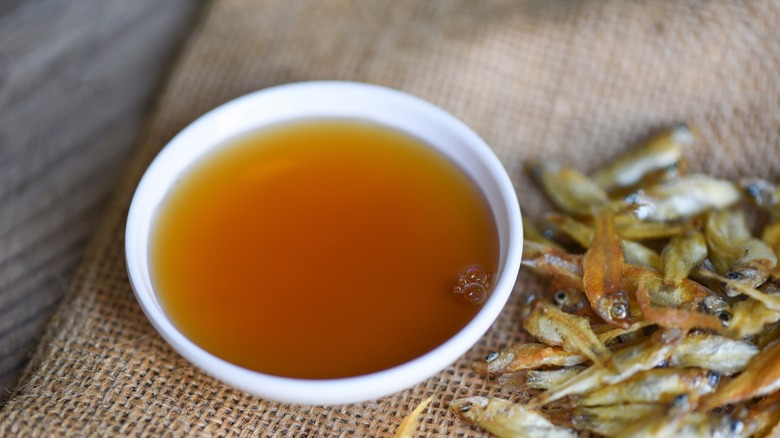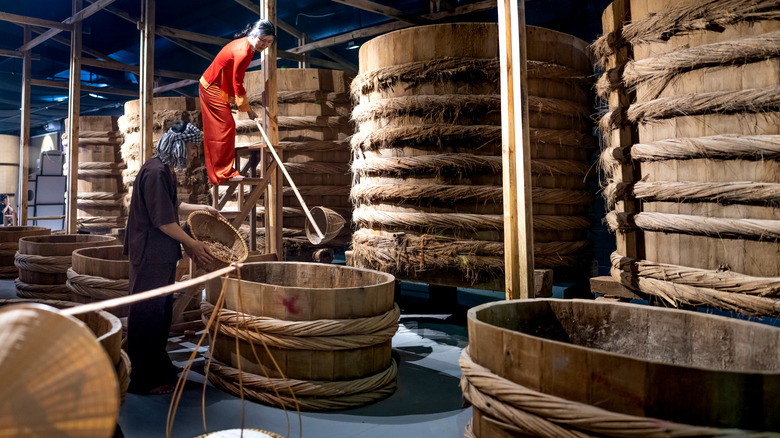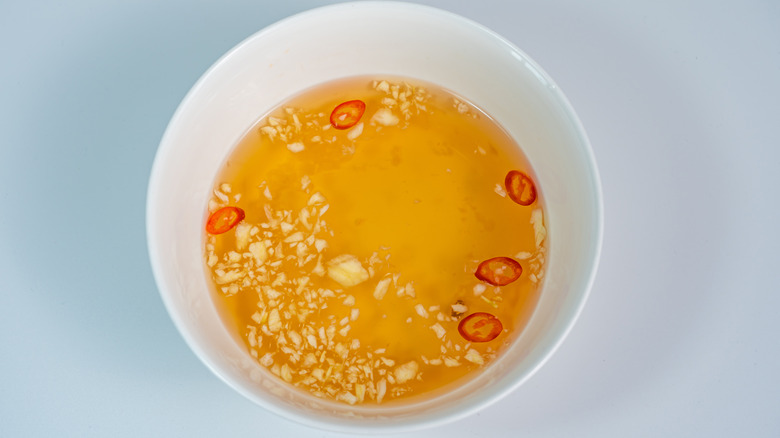Is Fish Sauce Actually Made From Fish?
Sometimes, we make assumptions about food that our friends might gleefully debunk for us. French fries are not from France, Belgian waffles are not from Belgium, and Chinese fortune cookies are more American than Chinese. So, can we safely assume that fish sauce is made from fish, or is there more to it?
Rest assured, fish sauce is made from fish and is a staple in Asian pantries, particularly for Thai and Vietnamese food. Historically, fish sauce was also widely used in the Roman (and Greek) empire, where it was known as garum. It is similar, but not identical, to present-day Southeast Asian fish sauces.
While some may imagine fish sauce as fish juice, it is more accurately the liquid from fermented fish. Fish sauce's deep, savory flavor and pungent smell come from using salt to ferment the fish for a few months until the fish breaks down and the mixture starts to yield liquid, and this becomes the fish sauce that we know and love.
Making fish sauce requires fish, salt and time
As a general rule, the fish in fish sauce is anchovies, but any small freshwater or saltwater fish with little value otherwise would also work. This is why you're unlikely to see large or costly fish used as a base for fish sauce. The best fish sauce uses a single kind of fish, just like single malt whiskey is considered better than blended whiskey.
The next step is to heavily salt the fish in a vat or large earthen container so that the fish slowly breaks down. A weight or bamboo mat is placed on the container to hold it in place. Over time (9-12 months), the fish will become semi-solid, and the solids will sink while the liquid will rise to the top. At this point, fish sauce producers will strain the liquid in various ways. Some may use a cloth filter; others might use a spigot (or plug) on the bottom of the jars.
The final treatment for the fish sauce also differs by country and producers, but typically, the liquid is left to air in the sun for a few weeks, which causes more fluid to evaporate, leaving a thicker fish sauce. This liquid is then bottled and sold to the public.
A few drops of fish sauce goes a long way
Not all fish sauce is equal. As SCMP explains, there is a grading scheme for fish sauce based on the nitrogen levels in the sauce. Anything over 30N is considered high-grade, with 40N being optimal. Most fish sauce in the market falls within the mid-20N range. The higher the N value, the higher the protein content and the umami flavor.
In other words, consider whether you are using fish sauce as one of the many ingredients in a dish or whether it is the hero of a dish. If you're making a Thai chicken stir fry with a mix of soy sauce, oyster sauce, and fish sauce, a lower grade of fish sauce would work. But if you're making nước chấm (a Vietnamese dipping sauce) where the fish sauce flavor is prominent, break out that high-grade fish sauce.
A more straightforward guide is to look at where the fish sauce was made. Generally, Thai fish sauce is more potent and saltier, so it works well with heavy flavors, while Chinese and Vietnamese fish sauces are lighter, so they will suit fresher or more delicate dishes.
You can also use fish sauce as an unexpected alternative to anchovies. Stock up on fish sauce and put a few drops in bolognese for a hit of umami, or add it to desserts. After all, fish sauce can last for years.


